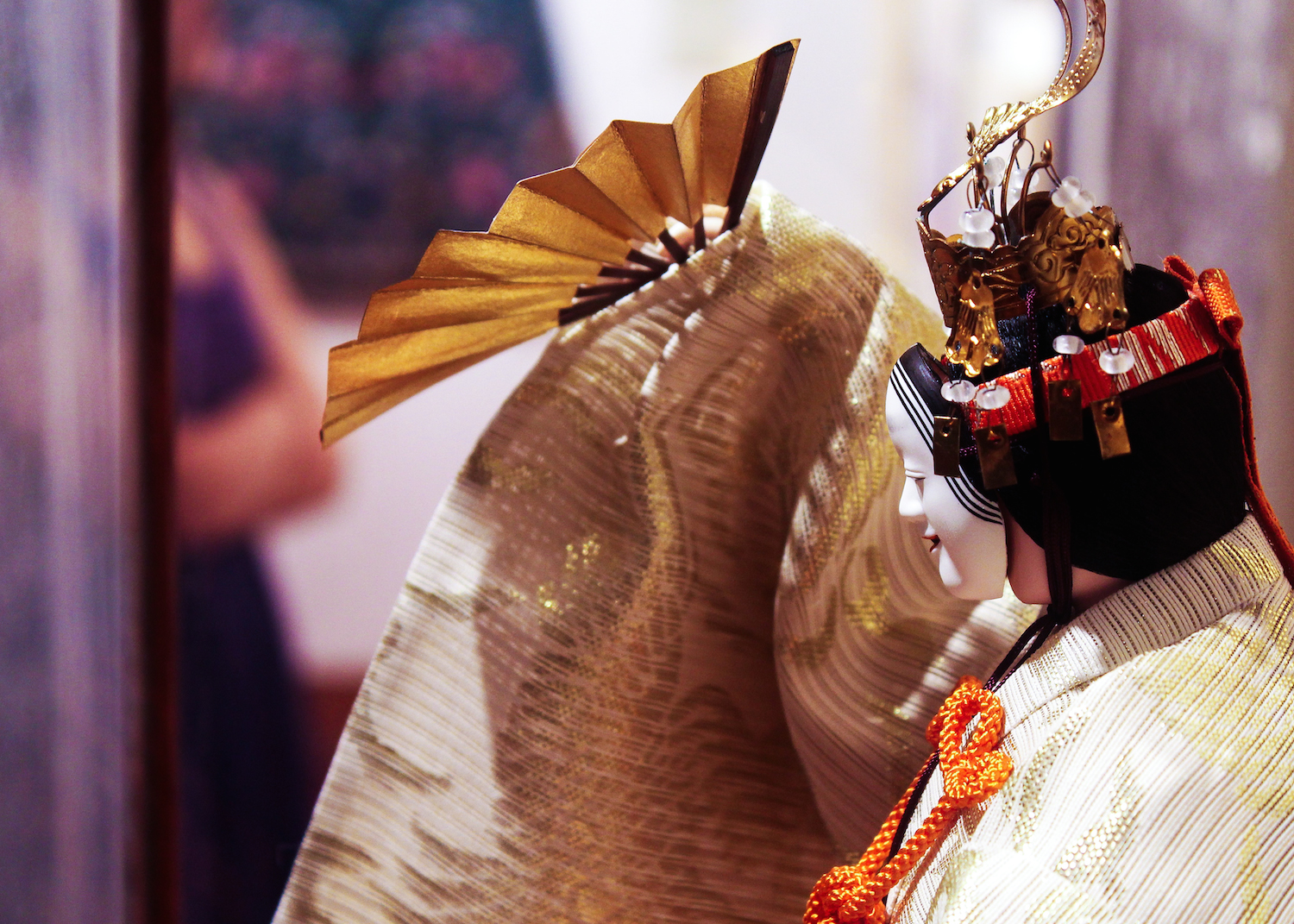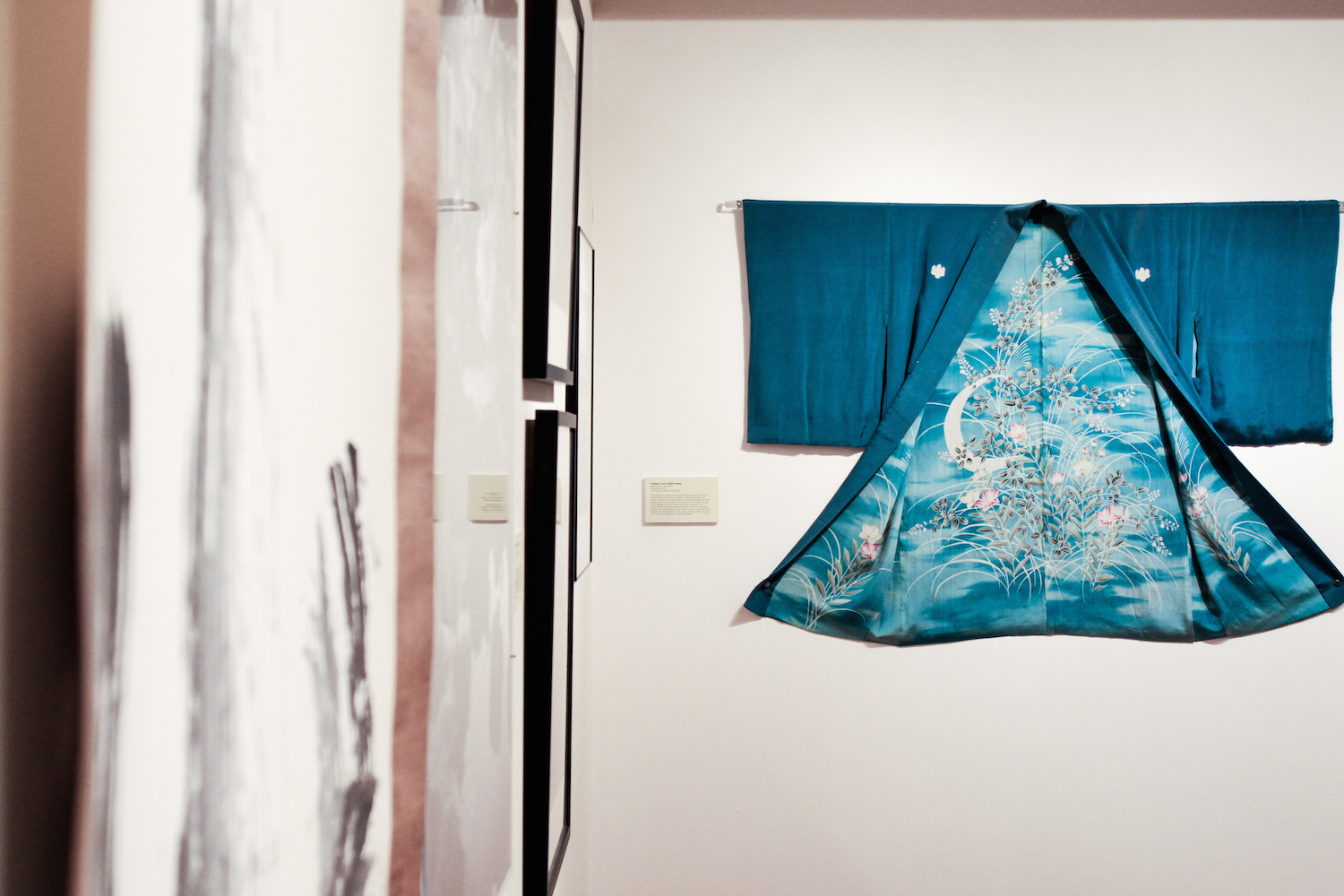This Wednesday, Sept. 21 saw the opening of an exhibition at the College of East Asian Studies (CEAS) Gallery at Mansfield Freeman Center titled “Draw Yourself In.” The exposition involves audience participation, showcasing some of the best work that the Mansfield Freeman Center has to offer.
The exhibit aims to liberate people of their inhibitions and to open them up to looking at works of art through a new lens, while also learning about the fascinating array of East Asian art. There is also an Instagram hashtag #drawyourselfinwes through which visitors can share their photos, poems, and drawings and see what others have done as well.
The exhibit was inspired by a recent show in Amsterdam at the Rijksmuseum. In this exhibit, the curators hung an enormous banner with a crossed-out camera over the entrance. This was not only about not taking photos; its aim was for viewers to engage with the pieces more deeply than just taking a photo. A study indicated that people were less likely to remember an artwork if they took a photo of it, deemed the “photo-impairment effect.” Their suggestion was that viewers should draw the pieces, taking the time to appreciate and to understand the work fully, while making their own connections through the physical art-making process.
Adjunct Assistant Professor for the College of East Asian Studies and Anthropology, as well as the curator for the Freeman Center for East Asian Studies, Patrick Dowdey, was the main curator for the exhibit. During the gallery opening, he explained to the crowd that the following idea was central to the show: encouraging people to slow down, take a moment to draw something, write something, or make up a story or a poem. The idea is not about the end result of a work, but rather the process of taking a look at what one is drawing, observing, and at the same time noticing things one may not have previously.
The show is a mix of modern and ancient works, ranging from Chinese embroidered dresses of the late 19th and 20th centuries to contemporary Japanese lithographs from 2013. These pieces are all part of the College of East Asian Studies’ collection, and since last spring, five University students have worked to curate the show alongside Professor of Asian Languages and Literatures Emerita Yokisho Samuel.
Each student picked works to which they felt attracted, especially pieces to which they had connections. These works were then captioned by the students, and the explanations they each wrote are on the walls beside the works, bearing their initials.
Walker Reiss ’17 spoke of the works he chose to include in the exhibition. One was a large black-and-white photograph taken by Professor of History, East Asian Studies, Environmental Studies, and Science in Society William Johnston in 1996. Reiss said he chose this piece because it was quiet yet complicated. The photo frames water lilies and their reflections in a pond, giving them a serene yet abstract and chaotic feeling when blown up to its current large size.
Lucia Wang ’17 chose some of her pieces because of the personal connections to the subject matter. Two photos are exhibited, one from 1946 taken in China during the civil war. Wang spoke to the audience at the exhibit about her grandfather who was living in China at that time.
In the photo, a man stands in a desolate field with his son and his donkey. Wang said this photo exhibited the “simple life” that her grandfather described to her.
“The ambiguity of the image allows anyone to look at it and draw their own story,” Wang said.
Another student curator, Erin Deleon ’17, chose more contemporary works. “To Carry the Stars” by Japanese printmaker Ryoji Suzuki is a lithograph made in 2013. Deleon explained the process by which this lithograph was formed and how its form echoes its content. The artist scratched through the ink on a lithographic stone to reveal the white stone underneath, just as stars come out of the darkness.
The other two student curators are Tiffany Liang ’17 and Andrew Ling ’18.
Wang spoke of the process through which the exhibition was developed.
“Last spring, we each selected a piece we had a strong connection with and came up with captions that would evoke the imaginations of the viewer,” Wang said. “There are so many different kinds of works and techniques in the show, but they all work together to create a thought-provoking space.”
Wang also said that it was her first time mounting and captioning a show. Another way in which the students worked together was by each using their skill sets to understand and to appreciate the works that were being chosen. For example, Wang was able to translate Chinese words and poetry that were embroidered onto some of the works to better understand the artists’ intentions. Reiss and Deleon, senior CEAS majors, used their Japanese to read descriptions and captions.
There is a continuity to the show that was mentioned during its opening. Each of the three walls shows a different variety of works from varying periods, but they are arranged in ways that render them understandable. The black-and-white photographs, all from different eras, are grouped together, and the embroidered Chinese dresses are on another wall.
Dowdey spoke of his gratitude to alumni and to generous donors who provided some of the works for the exhibition.
“It is not just wealthy donors but other people who contribute to our collection, who want the pieces that they have in their families to be enjoyed by a larger audience,” he said.
The featured piece in the exhibition, “Peony,” is a silk embroidery in a wood frame inlaid with mother of pearl from Southeast China that was donated by alumnus David Jones ’51, whose grandfather Edwin Jones (class of 1896) brought the piece back from China in 1925. The senior Jones, a missionary and educator, founded what is now known as the Fujian Normal University in Fuzhou, China.
The show will be open Wednesday, Sept. 21 through Friday, Dec. 9. Gallery hours are Tuesday through Sunday from noon to 4 p.m. Gallery admission is free.
- Neha Srinivas, Staff Photographer
- Neha Srinivas, Staff Photographer

